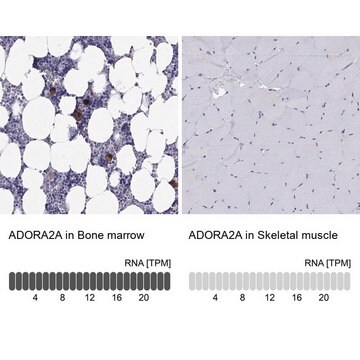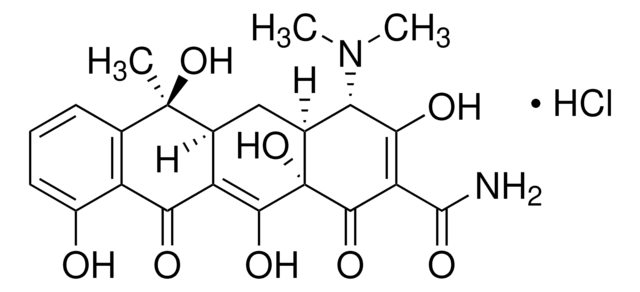MABS1255
Anti-Platelet Factor 4 Antibody, clone 197.2
clone 197.2, from mouse
Sinónimos:
Platelet factor 4, C-X-C motif chemokine 4, Iroplact, Oncostatin-A, PF-4
About This Item
Productos recomendados
biological source
mouse
Quality Level
antibody form
purified immunoglobulin
antibody product type
primary antibodies
clone
197.2, monoclonal
species reactivity
human
technique(s)
ELISA: suitable
flow cytometry: suitable
immunocytochemistry: suitable
western blot: suitable
isotype
IgG1κ
NCBI accession no.
UniProt accession no.
shipped in
ambient
target post-translational modification
unmodified
Gene Information
human ... PF4(5196)
Categorías relacionadas
General description
Specificity
Immunogen
Application
ELISA Analysis: A representative lot detected PF4 in the absence of heparin by ELISA. Decreased immunoreactivity of clone 197.2 was seen toward heparin-complexed PF4 (Xiao, Z., et al. (2008). Blood. 112(4):1091-1100).
Function Analysis: A representative lot and PF4, but not clone 197.2 or PF4 alone, activated human neutrophils as indicated by Mac-1 upregulation (Xiao, Z., et al. (2008). Blood. 112(4):1091-1100).
Immunocytochemistry Analysis: A representative lot, preconjugated with Alexa Fluor™ 488, immunolabeled the co-administered PF4 on human neutrophils. CD32a (Fc gamma RIIA) was seen co-localized with the PF4 anti-PF4 immune complexes on the surface of activated neutrophils (Xiao, Z., et al. (2008). Blood. 112(4):1091-1100).
Western Blotting Analysis: A representative lot detected PF4 under both reduced and non-reduced condition by recognizing a linear epitope (Xiao, Z., et al. (2008). Blood. 112(4):1091-1100).
Quality
Flow Cytometry Analysis: 1 µg of this antibody detected PF4 in one million 4% paraformaldehyde-fixed, 0.2% Triton X-100-permeabilized human platelets.
Target description
Physical form
Other Notes
Legal Information
¿No encuentra el producto adecuado?
Pruebe nuestro Herramienta de selección de productos.
Storage Class
12 - Non Combustible Liquids
wgk_germany
WGK 2
flash_point_f
Not applicable
flash_point_c
Not applicable
Certificados de análisis (COA)
Busque Certificados de análisis (COA) introduciendo el número de lote del producto. Los números de lote se encuentran en la etiqueta del producto después de las palabras «Lot» o «Batch»
¿Ya tiene este producto?
Encuentre la documentación para los productos que ha comprado recientemente en la Biblioteca de documentos.
Nuestro equipo de científicos tiene experiencia en todas las áreas de investigación: Ciencias de la vida, Ciencia de los materiales, Síntesis química, Cromatografía, Analítica y muchas otras.
Póngase en contacto con el Servicio técnico







